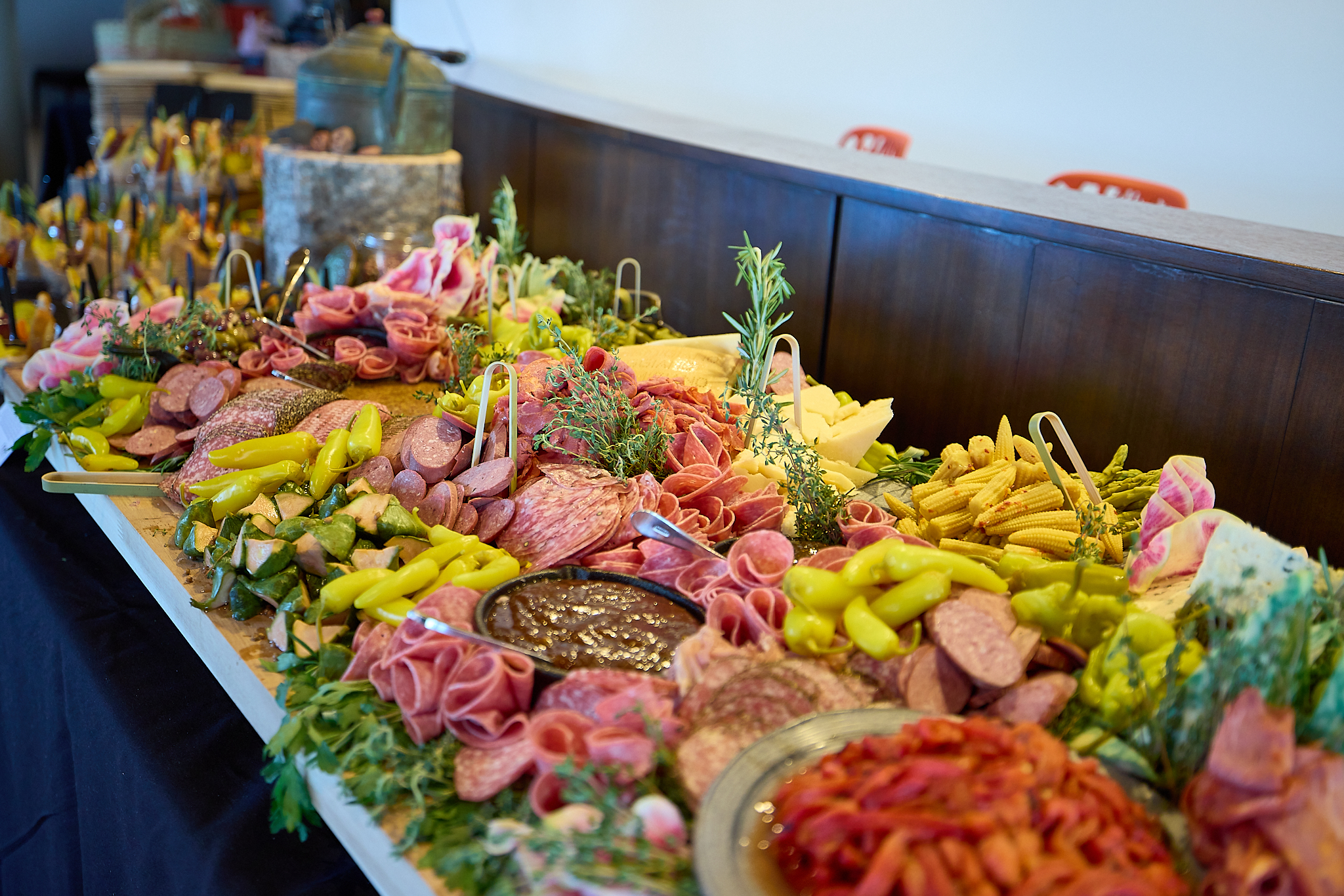(Bloomberg Businessweek) —
Want to try the oldest cuisine in America? Expect to wait.
At least that’s the case at Owamni in Minneapolis, where diners have to book seven weeks ahead. The year-old dining room was popular even before it was named best new restaurant at the James Beard Awards in June. It’s the highest-profile eatery among a growing number that are highlighting ingredients and dishes from the country’s first inhabitants.
Openings of American Indian-owned restaurants in the past year include: Cafe Ohlone in Berkeley, Calif.; Indigenous Eats in Spokane, Wash.; Nātv in Broken Arrow, Okla.; Thirty Nine in Oklahoma City; and Wahpepah’s Kitchen in Oakland, Calif., which also nabbed a James Beard nomination for best emerging chef.
Indigenous cuisine can vary widely by region and tribe, but the plates at these restaurants invariably focus on proteins and plants native to the US, including fish, corn, beans, squash, wild rice, and berries. Fry bread, a staple at many a state fair, shows up as both a sweet and savory dish.
At Owamni, the ever-changing menu can feature bison tartare with duck egg, a corn sandwich with elk, sweet potato, and pepita, plus a section of native corn tacos. Co-founder Sean Sherman—aka the Sioux Chef—highlights ingredients rarely seen on American menus, such as toasted crickets. He sources from Indigenous vendors and features fish and game from the Minneapolis area. He forgoes foods introduced by Europeans, such as dairy and wheat.
“It’s almost as powerful to highlight what’s not on our menu as what is,” he says.
The restaurant, on the upper level of a park pavilion by the ruins of an old mill, has large windows that offer an expansive view of the Mississippi River. Pennsylvania sedge and other native plants surround the patio. Sherman named the place after the Dakota tribe word owamniyomni, which describes the sacred site of swirling Mississippi waters where a village used to stand—and the restaurant now does.
Sherman first gained national attention in 2017, when The Sioux Chef’s Indigenous Kitchen, co-authored with food writer Beth Dooley, won a James Beard cookbook award. A subsequent TED Talk has garnered 2 million views, and the combined publicity helped Indigenous restaurants more broadly.
Even so, he and co-founder Dana Thompson, a descendant of the Wahpeton-Sisseton and Mdewakanton Dakota tribes, couldn’t get traditional bank financing for Owamni. They had to seek alternative lending sources, launching a Kickstarter campaign and using RSF Social Finance, a company in San Francisco that runs a fund for impact investing.
The 53-year-old National Center for American Indian Enterprise Development also aims to ease such funding challenges through advocacy, consultation and training, and lending. The 23,000-plus businesses with American Indian and Alaska Native owners in the US have $7.6 billion in annual payrolls, according to the latest-available figures from the Census Bureau, about 2% of them in accommodation and food services. There’s much room to grow.
The pandemic disproportionately affected American Indians, and their restaurants—particularly in rural areas—also suffered. They’ve since bounced back, says Chris James, the National Center’s president and chief executive officer. The growing popularity of Indigenous cuisine could make it easier for other native restaurateurs to access financing. There are also programs like the Treasury Department’s Community Development Financial Institutions Fund, James says. It awards federal and private money to financial institutions to underwrite loans for businesses in disadvantaged areas.
In the past decade, awareness has grown of food sovereignty—the idea that native people should be empowered to address hunger and health by cultivating their own fresh foods. Netflix released a documentary in 2020, Gather, examining the loss of food traditions to colonialism. It follows members of four tribes focused on food sovereignty.
Whether it’s Gather, the social justice movement, or an increasing interest in food sourcing that draws them in, James hopes diners realize that American Indian culture and businesses are strong, thriving, and diverse.
“It’s not just fry bread,” he says. “Chefs are taking traditional food and adding their own spin to it and creating something that’s totally new and healthy and yummy that might’ve had roots thousands of years ago.”
For Sherman and Thompson, success brings responsibility—including educating people about the lasting effect of colonization on Indigenous food. “We’re not going to sweep any of this negative history under the rug,” Thompson says. “There’s so much beauty and sustainability and an incredible wealth of knowledge that people have been missing.”
There are still challenges, like staying competitive with wages; Owamni includes a service fee on bills and has hired a financial adviser. The restaurant has mostly absorbed higher prices associated with inflation and hasn’t had to make menu changes since it already relies on seasonal ingredients.
In May the duo reopened Tatanka, a food truck they’d operated previously but closed to focus on Owamni. They also run a Sioux Chef catering business and oversee a nonprofit, NĀTIFS, or North American Traditional Indigenous Food Systems. It opened four years ago to train aspiring chefs in practical skills—say, how to butcher a beaver or cook ancient types of wild corn—as well as the importance of establishing food systems and businesses in their tribal communities.
It’s all part of a mission to create “multiple lifetimes worth of work” toward revitalizing American Indian cuisine, Sherman says. “We want to offer real solutions, and that means making sure that we’re setting this up for the benefit of others.”
STRAIGHT FROM THE SOURCE
Top Indigenous restaurants from around the US
The two locations of Tocabe, from co-owners Matt Chandra and Ben Jacob, draw on traditional Osage tribal recipes. Plates include nachos and fry bread with a choice of toppings. A posu bowl has a base of wild rice or mixed red quinoa and wheatberry; braised shredded bison or vegan beans are optional toppings. Get the wojapi, an American Indian berry sauce, for dessert.
Thirty Nine Restaurant, Oklahoma City
This eatery inside the First Americans Museum boasts traditional ingredients of the state’s 39 tribes. Dishes include hominy stew, buffalo pastrami Benedict, chimichurri turkey cutlets, and prickly pear and jalapeño jelly ice cream. Loretta Barrett Oden, a member of the Potawatomi and an Emmy-winning chef who previously hosted the PBS series Seasoned With Spirit, is a menu consultant.
Diners can either keep track of this food truck, which rotates among the city’s breweries, or sit down at the matching cafe at the Burke Museum on the University of Washington’s campus. Both menus feature tacos made from fry bread that owners Mark McConnell and Cecilia Rikard base on a traditional Blackfeet recipe. Toppings include chili, BBQ pulled pork, or braised bison.
Wahpepah’s Kitchen, Oakland, Calif.
Crystal Wahpepah, the first American Indian chef to compete on Food Network’s Chopped, opened her restaurant at the end of 2021, where she serves dishes like braised rabbit blue corn tamales, sweet potato and salmon tostadas, and acorn crepes for dessert. A member of Oklahoma’s Kickapoo Tribe, she also has a catering business and sells snack bars made from Indigenous ingredients.
On the latest menu at Sherman’s restaurant, dishes include Lake Superior trout served with white bean spread, a seasonal vegetable salad with toasted crickets, cedar-braised bison tacos, and wild rice sorbet. What you won’t find are any dishes with “colonial ingredients” such as wheat, dairy, cane sugar, pork, or chicken.
To contact the author of this story:
Anna-Louise Jackson in New York at jackson.anna@gmail.com
© 2022 Bloomberg L.P.





